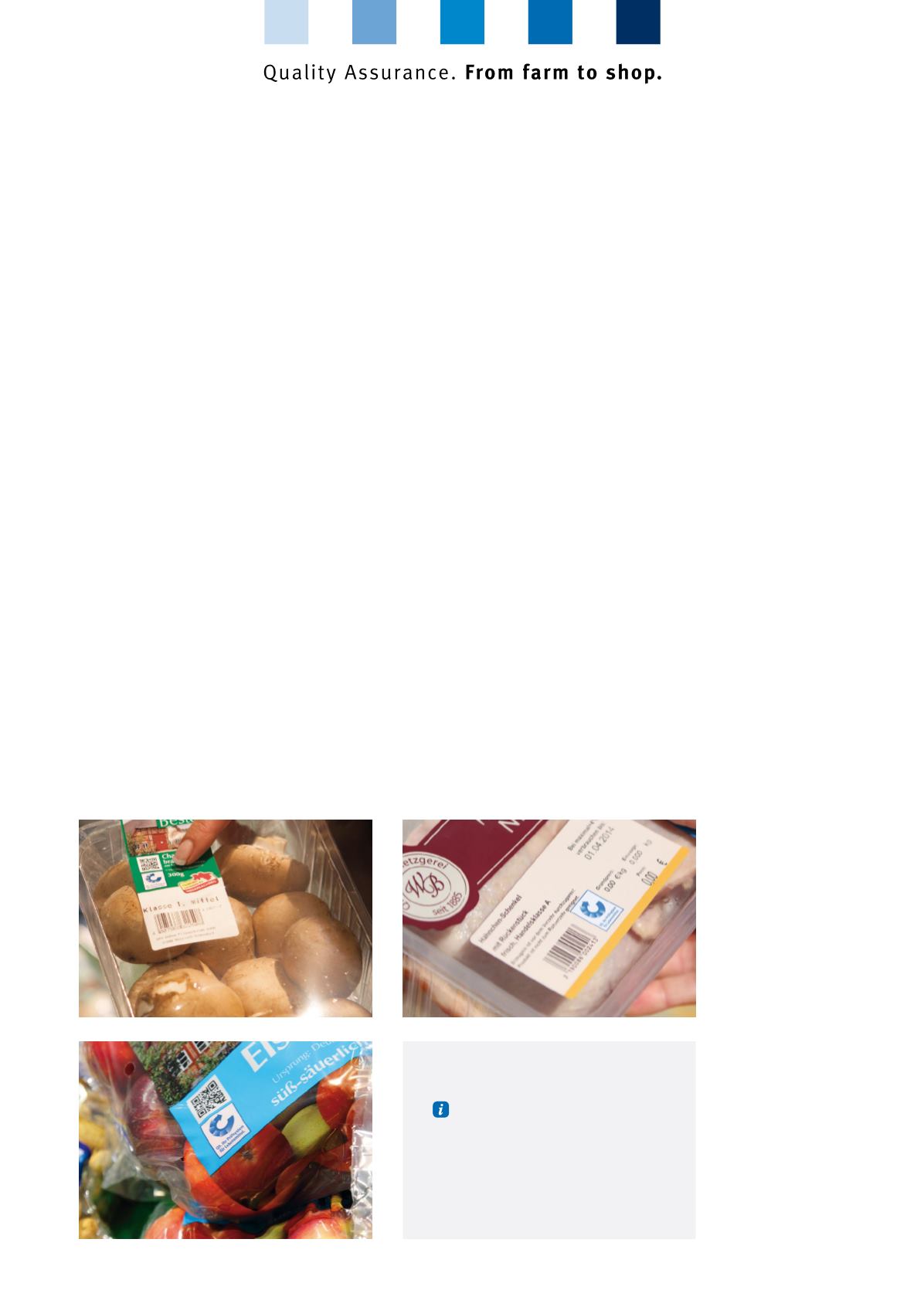
3
Style guide for the QS certification mark
As a quality assurance scheme, ‘QS. Quality scheme for food.’ defines and con-
trols stringent production and marketing requirements along the entire supply
chain for fresh foods.
This style guide outlines the rules and guide-
lines for the use and correct presentation of the
QS certification mark on products and in corpo-
rate communication.
Uniform use of the QS certification mark through-
out the entire scheme ensures its recognisability
in the market. It enhances the signal effect for
food you can trust in the long term.
Systematic quality assurance
The basis of seamless process and origin
assurance in the QS scheme is formed by the
regular control of all businesses from farm to
shop. The blue QS certification mark, which is
applied only if foods are produced in line with
these requirements, helps consumers to
orientate when shopping meat, cold cuts or
ham, fruit, vegetables or potatoes.
Signal for certified processes
For consumers, the blue QS certification mark
has been a clear signal for fresh food from com-
panies with certified processes for more than
10 years. Today, more than 23,000 branches in
the food retail sector can offer beef and pork,
poultry, cold cuts and ham with the blue QS
certification mark along with a large selection of
fruit, vegetables and potatoes.
Quality assurance creates trust
For the more than 130,000 scheme participants,
the benefits of QS certification are many and va-
ried, from an increase in a company’s own quality
demands through certification to the assured
traceability of QS products in the event of com-
plaints. Transparent quality assurance improves
the reliability of the supply chain, opens up new
sales channels and secures consumer trust.
Only foods whose production and
marketing have been thoroughly con-
trolled all the way from farm to shop
bear the blue QS certification mark.
1. Introduction


